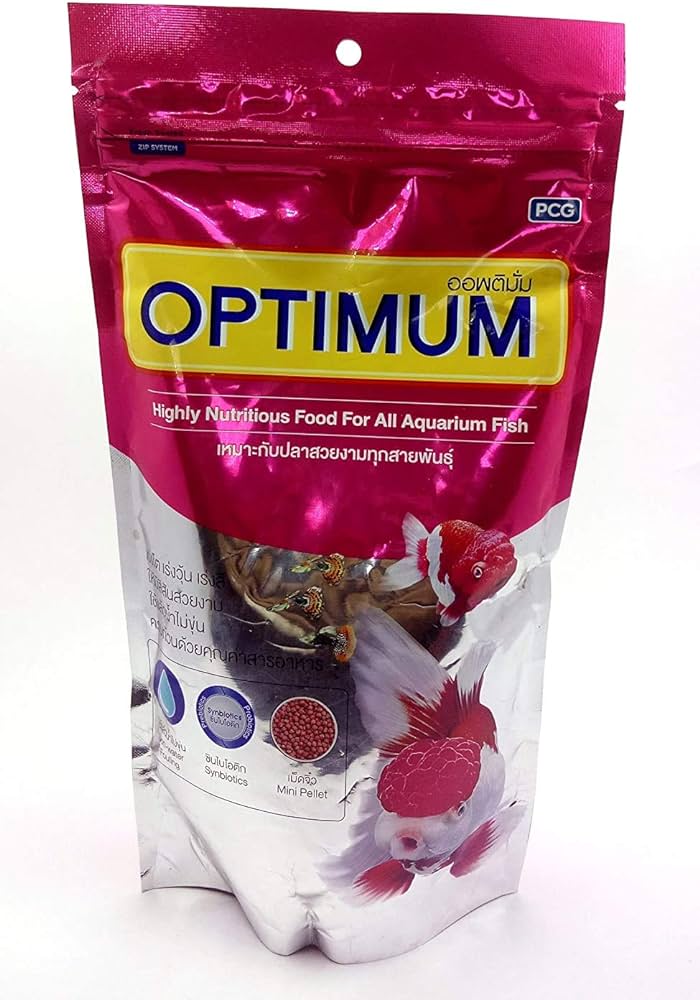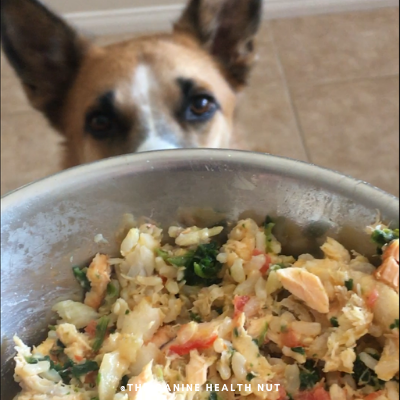Dogs are considered to be a man’s best friend, and as pet owners, it is our responsibility to provide them with the best care possible. Their health and well-being depend on the quality of food we give them. While there are many options available in the market, one type of food that is gaining popularity among dog owners is fish food. But, is fish food suitable for dogs? Let’s find out.
Why Choose Optimum Fish Food for Dogs?
Fish-based diets have been known to provide numerous benefits for our canine companions. Here are some reasons why you should consider adding fish food to your dog’s diet:
- High-Quality Protein Source: Fish is a great source of lean protein, making it an excellent option for dogs that have food sensitivities or allergies to other protein sources.
- Omega-3 Fatty Acids: Fish is rich in omega-3 fatty acids, which are essential for maintaining your dog’s skin and coat health, reducing inflammation, and promoting joint health.
- Low in Fat: Fish has lower levels of fat compared to other protein sources, making it a good option for dogs that need to lose weight.
- Easily Digestible: Fish is easily digestible, making it an ideal choice for dogs with sensitive stomachs or digestive issues.
Types of Fish Suitable for Dogs
Not all fish are created equal when it comes to providing the best nutrition for your dog. Some fish are high in mercury, which can be toxic to dogs if consumed in large quantities. Here are some types of fish that are safe and suitable for your furry friend:
- Salmon
- Trout
- Herring
- Sardines
- Mackerel
It is important to note that all fish should be cooked before feeding them to your dog to reduce the risk of parasites or bacteria.
How to Incorporate Fish Food into Your Dog’s Diet
Before making any changes to your dog’s diet, it is crucial to consult with your veterinarian first. They can help determine the best course of action and provide guidance on how much fish food to give your dog based on their age, weight, and health status. Here are some ways to incorporate fish food into your dog’s diet:
- As a Treat: You can use small pieces of cooked fish as a treat for your dog.
- Mixed with Regular Food: Try mixing some flaked or canned fish with your dog’s regular food to add variety and nutritional benefits.
- As a Supplement: Fish oil supplements are also available in the market and can be added to your dog’s food to provide them with the necessary omega-3 fatty acids.
Conclusion
When it comes to choosing the best diet for your furry friend, it is essential to do thorough research and consult with a professional. Fish food can be a great addition to your dog’s diet, but it should not be their sole source of nutrition. By incorporating fish into their diet, you can provide them with a high-quality protein source and essential nutrients that will contribute to their overall health and well-being. So, give it a try and see the difference in your dog’s health!
Overall, optimum fish food for dogs is an appropriate diet choice that can benefit them in many ways. Remember to always prioritize your dog’s health and consult with a vet before making any changes to their diet. With the right balance of nutrients, your dog can thrive on a fish-based diet and lead a happy and healthy life by your side. So, next time you’re at the pet store, don’t forget to pick up some fish food for your beloved furry friend!
So why wait? Start incorporating fish food into your dog’s diet today and see the positive impact it has on their health. Your furry friend will thank you for it! Happy feeding!
Tips for Transitioning to a Fish-Based Diet for Dogs
Transitioning your dog to a fish-based diet should be a gradual process to ensure it is well-tolerated and doesn’t cause digestive upset. Here are a few tips to help your dog make the switch successfully:
- Start Small: Begin by incorporating small amounts of fish into your dog’s current diet, gradually increasing the portion of fish while decreasing the amount of their old food for several weeks.
- Observe Your Dog’s Reaction: Pay close attention to your dog’s reaction to the new diet. Look out for signs of allergies or digestive issues, such as itching, ear infections, loose stools, or vomiting.
- Quality over Quantity: Ensure that the fish you’re feeding your dog is of high quality and well-cooked to avoid potential health risks associated with raw fish.
- Balance with Variety: While transitioning to a fish-based diet, remember to include other food types to provide a balanced intake of nutrients. This could include vegetables, fruits, and limited grain options as recommended by your vet.
- Consult with Your Vet: Before making any significant dietary changes, always consult with your veterinarian to confirm that a fish-based diet is suitable for your dog’s specific health needs and to get recommendations on appropriate types and amounts of fish to feed.
Remember, each dog is unique and might react differently to dietary changes. Monitoring and adjusting the diet according to your dog’s needs is key to a successful transition.
In summary, a fish-based diet offers several notable benefits for dogs, providing a high-quality, lean protein source and essential omega-3 fatty acids that support skin, coat, and joint health. It’s an excellent choice for pets with allergies, weight management needs, or digestive sensitivities due to its low-fat content and easy digestibility.

To ensure a smooth transition and avoid health risks, introducing fish gradually and consulting with a veterinarian is paramount for achieving a balanced diet and maintaining your dog’s optimal health. With the right approach and guidance, your dog can enjoy a wholesome and nutritious fish-based diet that will keep them happy, healthy, and full of energy! So why wait? Start incorporating fish into your dog’s diet today and see the positive difference it makes. Happy feeding! Keep exploring more options for your dog’s nutrition by learning about other types of protein sources.
Addressing Potential Concerns and Risks with Fish-Based Diets for Dogs
When considering a fish-based diet for your dog, it’s important to be aware of potential concerns and risks to ensure your pet’s safety and health. Here are some critical points to consider:
- Risk of Heavy Metals and Toxins: Some fish species may contain high levels of mercury and other environmental toxins. It’s important to choose fish that are known to have lower mercury levels such as salmon and trout, and avoid large predatory fish which are more likely to have higher mercury concentrations.
- Bone Hazard: Fish bones can be a choking hazard and may cause internal blockages or injuries. Always remove bones carefully from fish before serving it to your dog, or opt for boneless varieties.
- Allergic Reactions: As with any food, dogs can develop allergies to fish. If you notice any signs of food allergies, such as itching, gastrointestinal upset, or ear infections, after introducing fish to your dog’s diet, consult your veterinarian.
- Unbalanced Diet: Relying solely on fish as the only source of nutrition may lead to an unbalanced diet lacking in essential nutrients. A varied diet is necessary to meet all nutritional requirements unless your veterinarian advises a specific fish-based prescription diet for health reasons.
- Improper Preparation: Raw fish can carry harmful parasites and bacteria. Cooking fish thoroughly is crucial to prevent foodborne illness. Never feed your dog raw or undercooked fish.
- Sustainability: The environmental impact of fishing is a concern. To promote sustainability, choose fish from sources that adhere to responsible fishing practices or that are farmed with environmentally friendly methods.
By addressing these concerns and following recommendations from your veterinarian, you can safely include fish in your dog’s diet and enjoy the health benefits it provides.
Related Posts



1 Comment
Pingback: Mr. Pet organic dog food: Dog's No.1 best choice